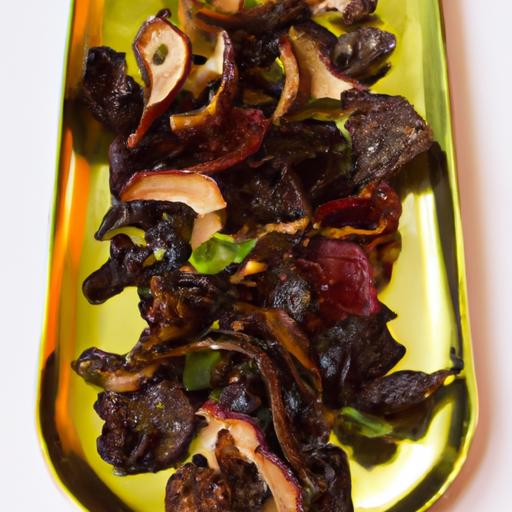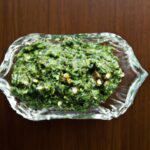In a world where snacks are often dominated by the sweet and the salty, a savory powerhouse is quietly making its mark-mushroom jerky. This plant-based delight combines the earthy richness of mushrooms with the satisfying chewiness of traditional jerky, creating a snack that’s as flavorful as it is nutritious. Whether you’re a seasoned vegan, a curious omnivore, or simply someone on the hunt for a unique culinary adventure, crafting savory mushroom jerky at home offers a rewarding journey into flavor and texture transformation. In this guide, we’ll explore the art and science behind turning humble fungi into a mouthwatering treat, revealing tips, marinades, and drying techniques that will elevate your DIY snack game to new, umami-packed heights.
Crafting Savory Mushroom Jerky: A Flavorful DIY Guide
Crafting savory mushroom jerky is a rewarding culinary adventure that transforms humble fungi into an irresistibly rich and chewy snack bursting with umami goodness. This DIY guide invites you to explore a perfect balance of robust flavors and textures, celebrating the versatility of mushrooms and the art of jerky making. Whether you’re a seasoned plant-based chef or a curious food lover, mastering the process will elevate your snacking game to new heights.
Prep and Cook Time
Preparation: 20 minutes
Marinating: 4 hours to overnight
Drying: 6-8 hours (depending on drying method)
Yield
Approximately 20 to 25 pieces of mushroom jerky (serving 4 to 5)
Difficulty Level
Medium – Requires attention to drying and marinating details for ideal results
Ingredients
- 500 g (1 lb) Maitake or Shiitake mushrooms, cleaned and sliced into 1/4 inch strips
- 1/4 cup soy sauce or tamari (for gluten-free option)
- 2 tbsp maple syrup or agave nectar
- 1 tbsp smoked paprika
- 1 tsp garlic powder
- 1 tsp onion powder
- 1/2 tsp black pepper, freshly ground
- 1 tbsp liquid smoke (optional but recommended for authentic jerky flavor)
- 1 tbsp apple cider vinegar
- 1 tbsp olive oil
Instructions
- Prepare the mushrooms: Gently clean mushrooms with a damp cloth or soft brush. Slice thick mushrooms like shiitake into uniform 1/4 inch strips for even drying. Delicate maitake can be separated into smaller clusters. Consistency in size ensures the best texture.
- Mix the marinade: In a medium bowl, combine soy sauce, maple syrup, smoked paprika, garlic powder, onion powder, black pepper, liquid smoke, apple cider vinegar, and olive oil. Whisk thoroughly until well blended.
- Marinate the mushrooms: Submerge mushroom pieces in the marinade, ensuring each piece is coated. Cover the bowl and refrigerate for a minimum of 4 hours, ideally overnight, to allow deep absorption of flavors.
- Preheat your dehydrator or oven: If using a food dehydrator, set the temperature to 135°F (57°C). For oven drying, position racks in the middle and preheat to the lowest possible setting (around 170°F or 77°C if adjustable).
- Arrange mushrooms for drying: Drain excess marinade and lay mushroom strips in a single, spaced-out layer on dehydrator trays or on wire racks placed on baking sheets if using an oven. Avoid overlapping to ensure consistent airflow.
- Dry the mushrooms: Dry mushrooms for 6-8 hours, checking periodically after 5 hours. They should feel leathery, chewy, and slightly pliable-not brittle. Flip pieces halfway through for even drying.
- Cool and store: Once dried, allow mushroom jerky to cool completely on room-temperature racks. Store in airtight containers or vacuum-sealed bags to maintain flavor and freshness for up to 2 weeks at room temperature, or freeze for longer storage.
Chef’s Tips for Success
- Choose mushrooms wisely: Bold, meaty varieties like Maitake, Shiitake, or Portobello yield the best texture and umami. Avoid watery or thin mushrooms that dry into brittle shards.
- Marinade magic: Customize your marinade with your favorite spices: cayenne for heat, ground coriander for brightness, or ginger for warmth.
- Drying alternatives: If lacking a dehydrator, the oven method works well-keep the door slightly ajar using a wooden spoon for airflow.
- Test texture often: Drying times vary by equipment and mushroom thickness. Check frequently to avoid over-drying, which can create an unpleasant crumbly texture.
- Make ahead: Jerky stores beautifully; prepare extra batches as grab-and-go snacks or colorful garnishes.
Creative Serving Suggestions and Storage Tips
Serve your savory mushroom jerky as a protein-rich snack alongside artisanal cheeses and nuts for a sophisticated charcuterie board. Chop into bite-sized morsels and toss into salads or grain bowls for a smoky, chewy contrast. For an adventurous twist, wrap strips in rice paper with crisp vegetables for a plant-based jerky spring roll.
For storage, keep the jerky in airtight containers away from moisture to preserve its chewy yet tender character. Vacuum-sealing enhances shelf life, while refrigeration extends freshness. Always recheck texture before serving-if overly stiff, a brief 10-minute steam or quick toss in a hot pan can restore pliability.

Nutrition Facts per Serving
| Nutrient | Amount |
|---|---|
| Calories | 95 kcal |
| Protein | 4 g |
| Carbohydrates | 12 g |
| Fat | 2 g |
For more inventive plant-based snack recipes, check out our creative snack ideas. To deepen your understanding of mushroom varieties and their culinary uses, visit the Fungi.com mushroom guide.
Q&A
Q&A: Crafting Savory Mushroom Jerky – A Flavorful DIY Guide
Q1: What makes mushroom jerky a unique alternative to traditional meat jerky?
A1: Mushroom jerky stands out because it’s entirely plant-based, making it perfect for vegetarians, vegans, or anyone seeking a healthier snack. Its naturally meaty texture and ability to absorb bold flavors means you get savory satisfaction without the guilt. Plus, mushrooms pack umami punch, turning each bite into a taste adventure!
Q2: Which types of mushrooms work best for making jerky?
A2: Shiitake, portobello, and king oyster mushrooms are top contenders. Shiitakes have a robust texture and deep flavor, portobellos offer a hearty, steak-like chew, and king oysters deliver a firm slice that holds up well during drying. You can experiment with blends to create your perfect savory symphony.
Q3: How do you prepare mushrooms to achieve that perfect jerky texture?
A3: The secret is slicing mushrooms evenly into thin strips-about 1/8 to 1/4 inch thick-to ensure consistent drying. Marinate them long enough to infuse flavor-anywhere from 2 hours up to overnight. Then dehydrate slowly at low heat, allowing them to dry out without becoming brittle, leaving you with a chewy, satisfying bite.
Q4: What essential flavors should be included in a marinade to make mushroom jerky truly savory?
A4: Think umami boosters like soy sauce or tamari, smoky touches like liquid smoke or smoked paprika, a bit of sweetness from maple syrup or brown sugar, and a zing from garlic and black pepper. A splash of apple cider vinegar or Worcestershire sauce (vegan versions available) can add tang and depth, crafting a complex flavor profile.
Q5: Can mushroom jerky be customized for different flavor preferences?
A5: Absolutely! Once you’ve got the basics down, play with spices and herbs. Try spicy chili flakes for heat, ginger and sesame oil for an Asian twist, or rosemary and thyme for earthier notes. The flexibility makes mushroom jerky your creative canvas-tailored exactly to your palate.
Q6: How long does homemade mushroom jerky last, and what’s the best way to store it?
A6: When properly dehydrated and stored in an airtight container, mushroom jerky can last up to two weeks at room temperature. For longer shelf life, refrigerate or freeze it, and it can last for a month or more. Always keep it dry to preserve that perfect chew and flavor burst.
Q7: Is mushroom jerky nutritious? What benefits does it offer?
A7: Beyond being a low-calorie, high-fiber snack, mushroom jerky delivers antioxidants, B vitamins, and minerals like potassium and selenium. It’s a savory way to nourish your body with plant-powered goodness while curbing cravings for processed snacks.
Q8: What equipment is needed to make mushroom jerky at home?
A8: You don’t need fancy gear to start your jerky journey! A sharp knife for slicing, a bowl for marinating, and either a food dehydrator or a low-temperature oven will do the trick. The key is patience-slow drying is the art behind the savory transformation.
With this Q&A as your guide, you’re ready to embark on a delicious DIY adventure turning humble mushrooms into crave-worthy jerky treats bursting with flavor and goodness. Happy crafting!
In Summary
As you close the chapter on your homemade mushroom jerky adventure, remember that this savory treat is more than just a snack-it’s a testament to creativity, patience, and the joy of crafting flavors from the earth’s bounty. By mastering this DIY guide, you’ve unlocked a world where umami-rich mushrooms transform into chewy morsels of delight, perfect for hikes, lunchboxes, or simply savoring one bite at a time. So next time hunger strikes, reach for your homemade jerky and relish the satisfying harmony of nature and nurture in every flavorful chew. Happy crafting!


